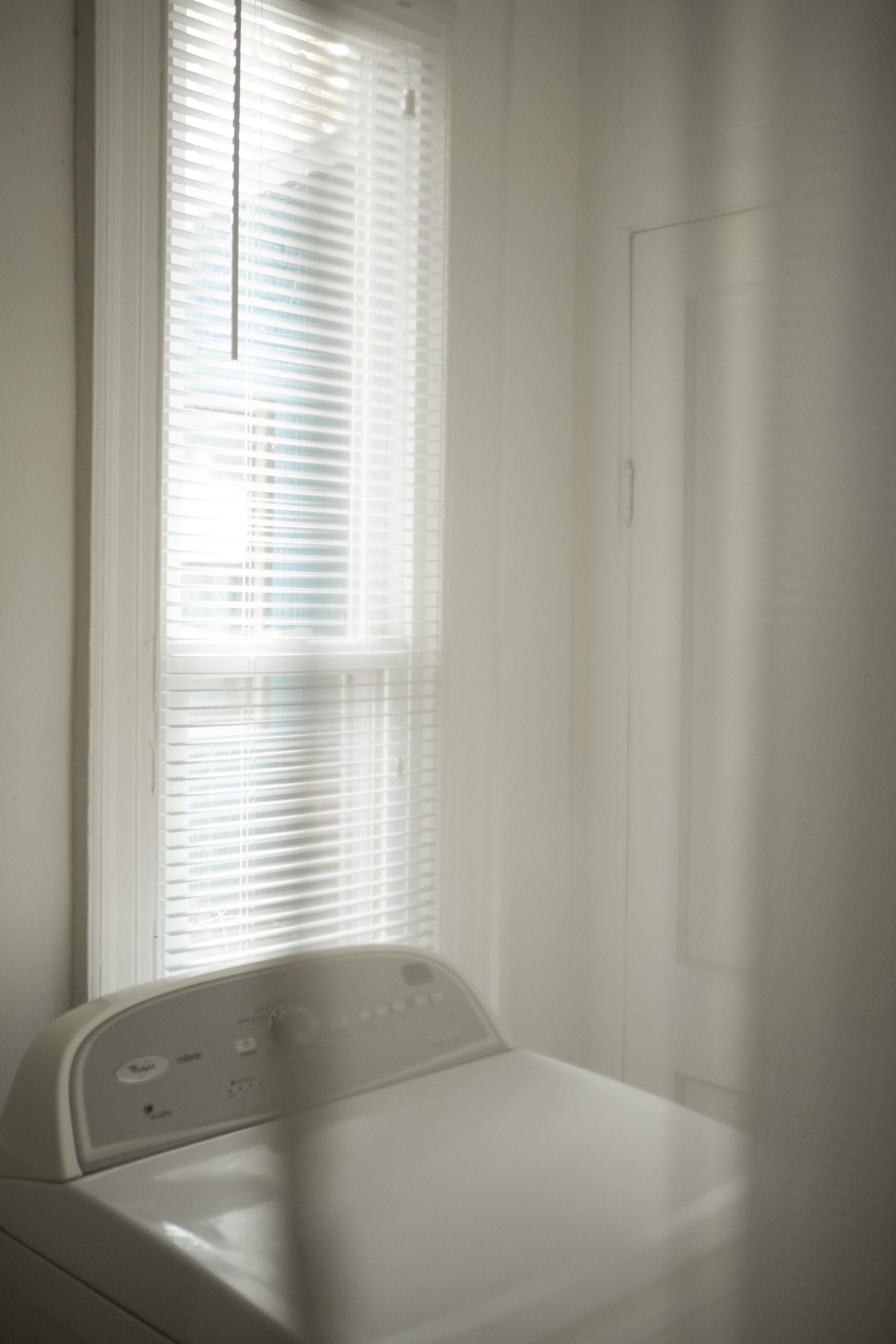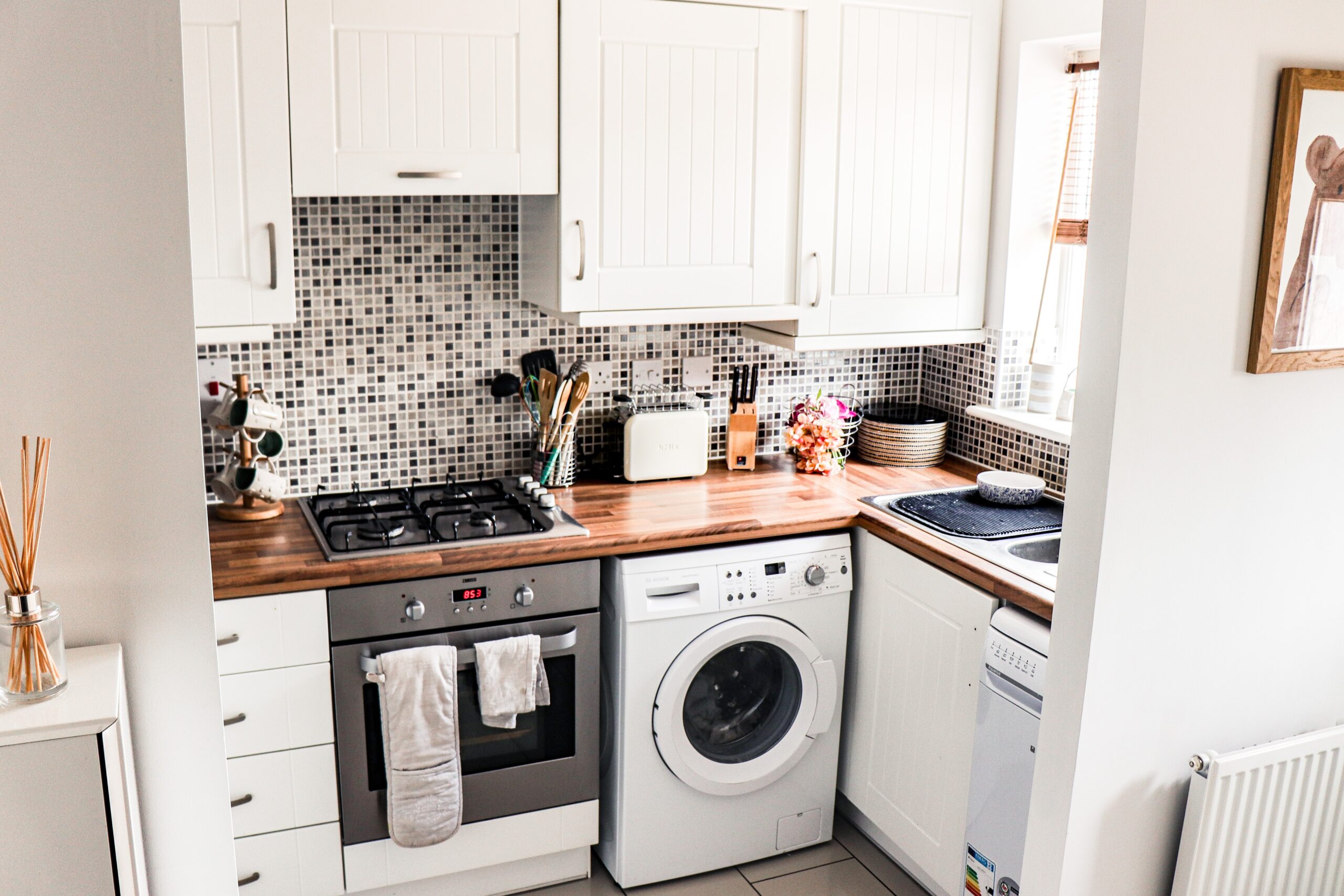Laundry is one of those household chores that never seems to end. Having a well-designed laundry room can make the task much more manageable. Whether renovating or building a new home, finding the right place for your laundry room is key to ensuring convenience and efficiency.
Here, we’ll look at the pros and cons of various locations for a laundry room in your home.
Let’s get straight to the point.
The ideal laundry room location depends on convenience, space, and household needs. Popular options include dedicated laundry rooms, basements, mudrooms, bathrooms, hallway closets, kitchens, and garages, each with pros and cons.
Key factors to consider are proximity to bedrooms for easy laundry management, noise control, available space, accessibility, and potential impact on home value. A well-designed laundry room can enhance efficiency and appeal in a spare or smaller space.
Ultimately, the best location balances practicality with the specific layout and lifestyle of the household.

Suggested Locations For Laundry Room
If you’re lucky enough to have a spare bedroom dedicated solely to laundry, you’re ahead of the game. A large, dedicated laundry room is the pinnacle of convenience.
You can add full-height cabinets, luxurious countertops, and ample storage for everything from ironing boards to linens. This setup offers functionality and luxury, enabling an organised, efficient laundry process.
Pros:
- Ample space for appliances, storage, and folding.
- Increased home value with a luxurious, dedicated room.
- Potential for high-end finishes, like stone countertops and built-in cabinets.
Cons:
- Takes up a whole room, which might be better used for other purposes.
- It could be better for smaller homes or those with limited space.
Basement Laundry Rooms
Traditionally, laundry rooms have been located in basements. While this might not seem appealing to some, a basement laundry room can still be transformed into a functional and inviting space.
Modern lighting, cabinetry, and durable flooring allow you to turn a dark, dingy basement into an organised laundry hub.
Pros:
- Utilises often-unused basement space.
- Keeps laundry out of sight from the main living areas.
- Allows for noise control since it’s far from bedrooms and living rooms.
Cons:
- Inconvenient for carrying laundry up and down stairs.
- It can be dark or damp if not properly renovated.
- It is not ideal for homes where accessibility is a concern.
Mudroom Laundry Combinations
Combining the laundry room with a mudroom makes sense for families with active lifestyles. This setup keeps dirty clothes and shoes contained in one area, making it easier to handle post-sport or outdoor activities.
It’s also a space to leave wet clothes and muddy shoes without worrying about dirtying other parts of the home.
Pros:
- Convenient for families with kids involved in sports or outdoor activities.
- Keeps dirt and mud contained in one space.
- Reduces clutter in the rest of the home.
Cons:
- Usually far from bedrooms, where laundry piles up.
- More room may be needed for a fully functional laundry area.
- Requires extra space in the mudroom to avoid clutter.
Bathroom Laundry Rooms
Some homeowners install laundry appliances in their bathrooms. This is a common choice in Europe and Australia, where space is often limited.
While it’s a practical solution for homes without much extra room, it has its downsides, such as sharing space with daily bathroom routines.
Pros:
- Convenient if located in a master or main bathroom.
- No need to carry dirty clothes far from the bathroom, where they’re usually discarded.
- Great for small homes or apartments.
Cons:
- Takes up space in the bathroom, reducing comfort.
- Can’t use the laundry if the bathroom is occupied.
- Noise from the washer and dryer may be disruptive.
Laundry In A Hallway Closet
A hallway laundry closet is a space-saving option, particularly in homes with scarce extra room. It’s often located near bedrooms, which is convenient for handling laundry. However, it can feel cramped if not designed properly.
Pros:
- Conveniently located near bedrooms, where most laundry is generated.
- Saves space, especially in small homes.
- Easily accessible for quick loads of laundry.
Cons:
- Limited space for folding, sorting, or storing laundry.
- It can create noise issues if located near sleeping areas.
- Requires careful design to avoid clutter and make the most of limited space.
Kitchen Laundry Rooms
In some European homes and small apartments, the kitchen is where you’ll find the washer and dryer. While it might be practical due to plumbing lines, many homeowners in Australia prefer to keep laundry separate from food preparation areas.
Pros:
- Convenient plumbing and water lines are already in place.
- Saves space in small homes or apartments.
- Combines household chores in one space, simplifying multitasking.
Cons:
- Clothes can absorb kitchen smells.
- Takes up valuable kitchen space.
- Noise and vibrations from the washer or dryer can be disruptive.
Laundry In The Garage
It’s common to put the laundry in the garage in certain parts of Australia and North America. This option may work for homes with limited indoor space, but it has several drawbacks.
Pros:
- Keeps noise and clutter out of the main house.
- Saves indoor space for other uses.
- Easy access to outdoor work clothes or sports gear.
Cons:
- Garages are often uninsulated, making the space uncomfortable in extreme weather.
- Laundry can easily get dirty again in a garage environment.
- It may lower home value compared to a dedicated indoor laundry room.
Considerations For Your Laundry Room Location

When deciding where to place your laundry room, there are several factors to keep in mind:
1. Proximity To Bedrooms
Having the laundry room close to the bedrooms is a smart choice because that’s where most dirty clothes accumulate. When the laundry room is nearby, it’s much easier to gather dirty items and return clean ones without much effort.
A second-floor laundry room or hallway closet near the bedrooms is particularly convenient for families with kids. You’ll save time and energy by not carrying laundry baskets up and down stairs.
This arrangement also simplifies managing multiple loads of laundry throughout the day, especially in a busy household.
2. Noise Control
Washing machines and dryers can produce significant noise, which may disrupt daily activities like working, studying, or even relaxing. Therefore, issuing a location far enough from that area, such as bedrooms or home offices, is essential.
Soundproofing measures, such as using noise-dampening materials in the walls or flooring, can also be useful if you cannot place the laundry room far from these spaces. Placing the laundry in the basement or a mudroom can help reduce the noise impact in main living areas.
If noise control is a priority, avoid putting laundry appliances in or near rooms where people frequently gather, like the living room or dining room.
3. Space Availability
Space is a critical consideration, especially in smaller homes. If you don’t have the luxury of a full laundry room, you can get creative by integrating the laundry area with other spaces, such as a bathroom, mudroom, or hallway closet.
Stackable washer and dryer units are perfect for smaller homes, as they save valuable floor space. Even in larger homes, using the available space efficiently is important—adding built-in cabinetry or foldable countertops can enhance the functionality of a small laundry area.
Optimising the layout ensures you have enough room to sort, fold, and store clothes, making laundry day less chaotic.
4. Accessibility
Ease of access is important when choosing a location for your laundry room, especially for families with young children or elderly members. Carrying heavy laundry baskets up and down stairs can become a burden, particularly if the laundry room is in a basement or garage.
Placing the laundry room on the main or second floor eliminates unnecessary trips and makes it easier to handle loads. Accessible laundry rooms allow you to multitask effectively, whether coo you’re inner, watching the kids, or working from home.
For those with mobility issues, having an accessible laundry space is convenient and necessary.
5. Home Value
A well-thought-out laundry room design can significantly boost your home’s resale value. Buyers often prioritise convenience, and having laundry facilities on the main or upper floors is seen as a desirable feature.
Modern homes are moving towards functional, well-designed laundry rooms not tucked away in basements. Features such as built-in cabinets, ample counter space, and stylish finishes can make your laundry room a selling point.
Investing in a thoughtfully designed laundry area makes life easier and can make your home more appealing to future buyers, adding to its market value.
Conclusion
When renovating or designing a laundry room, it’s important to consider both convenience and functionality. Placing the laundry room near bedrooms or in a mudroom offers practical solutions for families.
However, basements, garages, or kitchens are the best options, especially in homes with multiple floors or limited space. Ultimately, the best place for your laundry room depends on your household’s available space and lifestyle.
Whether buying a new home or renovating an existing one, investing in a well-designed laundry room will make the chore more bearable and increase your home’s overall value.
FAQs About Laundry room
What Is A Laundry Room?
It’s a space where you keep as much to do with washing your clothes as possible. The washing machine, the tumble dryer, the detergents, the laundry baskets, the ironing board, the pegs, the iron – you get the gist.
What Is The Difference Between A Utility Room And A Laundry Room?
At first glance, you may think that utility rooms and laundry rooms are exactly the same, since both will have ‘a sink, washing machine and dryer’, but a utility room typically will also accommodate cleaning equipment and products, and maybe even functional elements like a boiler or water heater.
What Is Needed In A Laundry Room?
Laundry Room Essentials
- Detergent.
- Bleach.
- Dryer sheets.
- Stain and odor removers.
- Anything else you need to do your laundry.
- Ironing and Sewing Supplies.
- Extra Towels.
- Cleaning Supplies.
What Is A Laundry Room Sink Called?
Often called a utility sink, a laundry sink is a rugged, large-capacity sink used primarily for cleaning or soaking clothing. A laundry sink is also used for washing items unrelated to clothing, such as paintbrushes.
Do Laundry Rooms Add Value?
The truth is a laundry room, no matter how great it is, won’t increase the value of your home all that much, realtors tell us. But the location of the laundry room does matter to buyers. So, if you’re remodeling or building a home, and have convenience and resale value in mind, consider where you put that laundry room.

